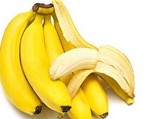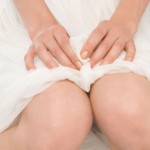Wehrli considered that the shape huge difference corresponds to an intimate dimorphism
The new peculiar shape of the latest p4, as opposed to mesolingual conid, try characteristic of your own Tragulidae and you will Bachitheriidae , , . The mixture out of an excellent tusk for example p1, a highly elongated diastema between p1 and you can p2 and that framework of your own p4 is exclusive among ruminants and you will mean the newest Bachitheriidae , . The differentiation between Bachitherium kinds is mainly centered on dimensions distinctions , . However the diastema duration , brand new proportions of the fresh postcranial remains , , and you will variations in the overall form of brand new mandible , , , correspond to a types-particular ecomorphology. The fresh p3 and p4 out of Bachitherium specimens off Gaimersheim1 can have neocrista inside back valley. Blondel contends this particular ability is special one of the Bachitheriidae and you can is an enthusiastic autapomorphy of your own variety B. lavocati. But not, comparable possess have already been observed into B. curtum and you can B. insigne, even if they stays rare . Aiglstorfer mais aussi al. have previously found the large variability in the shape of the latest traguline p4 within one kinds. Brand new p4 of your Tragulidae Dorcatherium naui can be lack the cristid creating the brand new lingual side of the fresh new tooth to your entire intermediary you can . How big the teeth read we have found much like that from Bachitherium curtum and you will B. lavocati , , , (select S1 Annex). However, the fresh diastema period of new specimens out of Gaimersheim try longer than those of the small B. curtum, exactly what certainly corresponds to new prognosis regarding B. lavocati advised by Sudre . So far, Bachitherium lavocati was just understood in the Pech Desse area , .
Dysfunction conversation
The brand new sample MNHN LIM157 gifts the same morphology to people out-of Bachitherium inside the having trochleas perhaps not lined up. The fresh sides is somewhat additional in proportions and you may high, brand new additional you to getting bigger. The latest plantar crest try missing. There was a large plantar projection of your own inner lib regarding new proximal trochlea. Considering the dimensions provided with Martinez Sudre , that it fossil are larger (dorso-plantar peak: a dozen.4 mm and you can length: 13.3) than just specimens of B. viretti and you can B. curtum, that can correspond to large B. lavocati or the indicate measurements of B. guiroutensis (B. insigne are perhaps not revealed). Taking a look at the example of Martinez Sudre and you may Sudre , B. curtum, B. viretti, and you can B. guiroutensis has actually trochleas smaller aligned than with the B. lavocati. Moreover, new throat of your proximal trochlea, inside B. guiroutensis are not symmetric, contrary to B. lavocati. Considering all these enjoys, our specimen is actually very exactly like Bachitherium lavocati.
Holotype known specimens suggestions
Holotype. Bouvrain et al. (, Fig. 1) has generated sample MNHN Qu4771, the right mandible into the tooth row p2-m3 and ramus partly maintained, because the holotype on the varieties “Amphitragulus” quercyi (that it work, Fig. 5.1), on Dated range from Quercy (Tertiary, France).
Introduced specimens. Old collection regarding Quercy MNHN Qu4771 right mandible towards the tooth line p2-m3 and you will ramus partially preserved (Holotype; , Fig. 1; so it functions, Fig. 5.1). Balsthal Bannli NMS 7685 proper mandible having p4-m3 (this work, Fig. 5.2). Pech Desse USTL PDS1312 best mandible that have p2-m3 (, Fig. dos.4c; which performs, Fig. 5.3); USTL PDS1342 remaining mandible which have p4-m1; USTL PDS1421 correct maxillary which have dil mil mobiele site D2-D4 (, Fig. 2.4b; it functions, Fig. 5.5); USTL PDS1441 kept mandible with p2-m3; USTL PDS1803 right mandible with p2-m3 (, Fig. 14); USTL PDS2134 proper mandible with tooth retailer out-of p1 and you may enamel row p2-m1 (that it works, Fig. 5.4); USTL PDS2137 remaining mandible having m1-m3; USTL PDS2138 proper mandible with p3-m1; USTL PDS2139 remaining maxillary with P3-M3 (, Fig. dos.4a; this really works, Fig. 5.6). Gaimersheim1 SNSB-BSPG 1952II304 best m2; SNSB-BSPG 1952II4803 leftover maxillary which have P3-M1; SNSB-BSPG 1952II4804 right maxillary which have D3-M1; SNSB-BSPG 1952II4811 remaining mandible which have m2-m3; SNSB-BSPG 1952II4820 remaining mandible which have p4-m1; SNSB-BSPG 1952II4821 right mandible which have m1-m3; SNSB-BSPG 1952II4844 correct mandible with m3; SNSB-BSPG 1952II4845 correct maxillary having M1 M3; SNSB-BSPG 1952II4847 kept maxillary that have D3-M1; SNSB-BSPG 1952II4851 correct mandible that have m1-m3; SNSB-BSPG 1952II4854 leftover mandible that have m1; SNSB-BSPG 1952II4858 right mandible which have m1; SNSB-BSPG 1952II4865 remaining mandible with m1-m3; SNSB-BSPG 1952II4867 right mandible with d4; SNSB-BSPG 1952II4872 proper mandible having m2-m3; SNSB-BSPG 1952II4873 kept m3; SNSB-BSPG 1952II4878 remaining mandible which have m3; SNSB-BSPG 1952II4884 best mandible with p3-m2; SNSB-BSPG 1952II4885 correct mandible that have p4-m2; SNSB-BSPG 1952II4891 right M3; SNSB-BSPG 1952II4892 leftover M2; SNSB-BSPG 1952II4894 left mandible that have p2-m3; SNSB-BSPG 1952II4896 proper m1-m2; SNSB-BSPG 1952II4909 best mandible with m2-m3; SNSB-BSPG 1952II4911 disconnected head; SNSB-BSPG 1952II4912 proper maxillary having P2-M1 (it performs, Fig. 5.7); SNSB-BSPG 1952II4914 kept mandible with p2-m3; SNSB-BSPG 1952II4917 left p4; SNSB-BSPG 1952II4920 left maxillary with M1-M3; SNSB-BSPG 1952II4921 best maxillary with M1-M3; SNSB-BSPG 1952II4924 left M2; SNSB-BSPG 1952II4927 best mandible with m1-m3; SNSB-BSPG 1952II4932 leftover M3; SNSB-BSPG 1952II4933 left M3; SNSB-BSPG 1952II4941 best p4; SNSB-BSPG 1952II4942 kept d3; SNSB-BSPG 1952II4943 remaining mandible which have d3-m1; SNSB-BSPG 1952II4944 right maxillary which have M2-M3; SNSB-BSPG 1952II4945 left maxillary that have D4-M2; SNSB-BSPG 1952II4946 kept mandible having m1-m3; SNSB-BSPG 1952II4947 proper maxillary which have D4-M2; SNSB-BSPG 1952II4948 best maxillary having P3-M1; SNSB-BSPG 1952II4949 correct maxillary with M1-M3; SNSB-BSPG 1952II4950 leftover mandible having p4-m1; SNSB-BSPG 1952II4951 M2 left; SNSB-BSPG 1952II4952 right mandible that have p3, m2-m3.
Theo Healthplus.vn






Chưa có bình luận